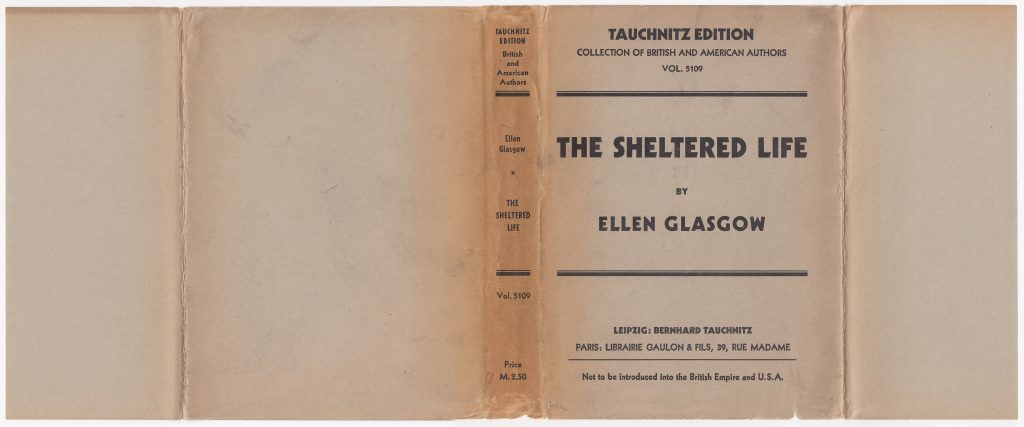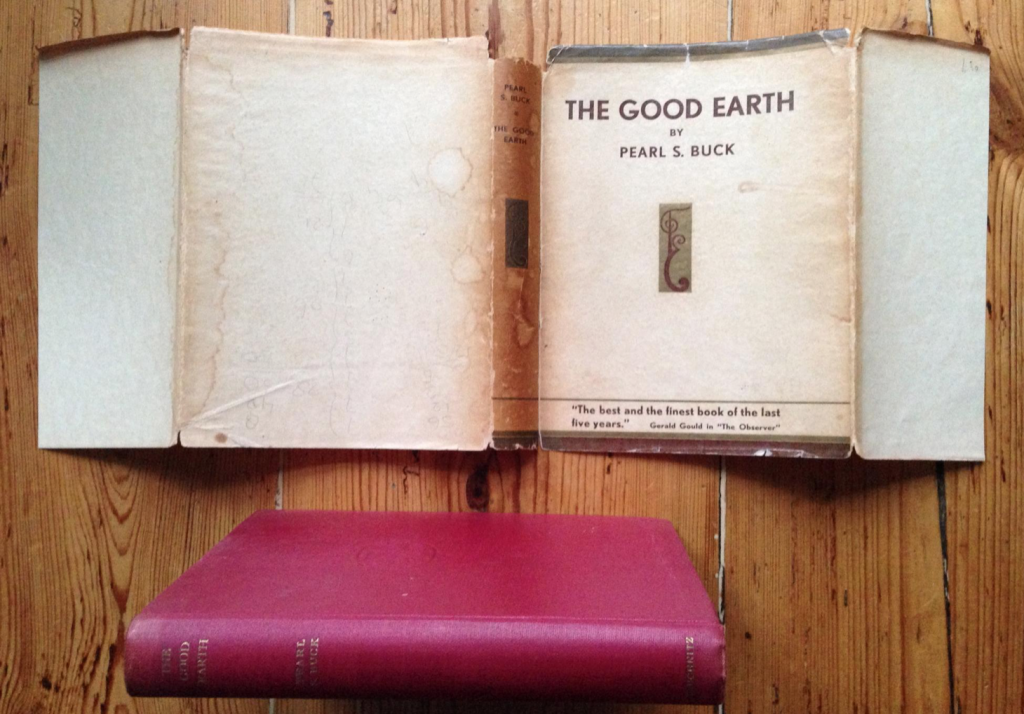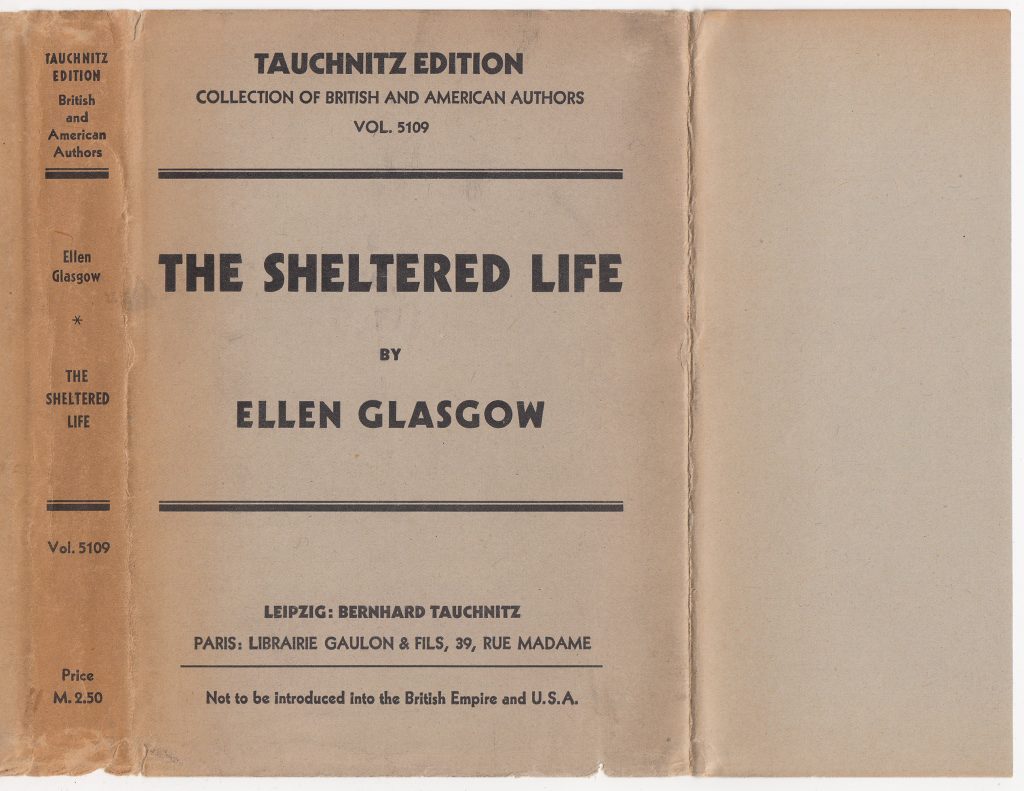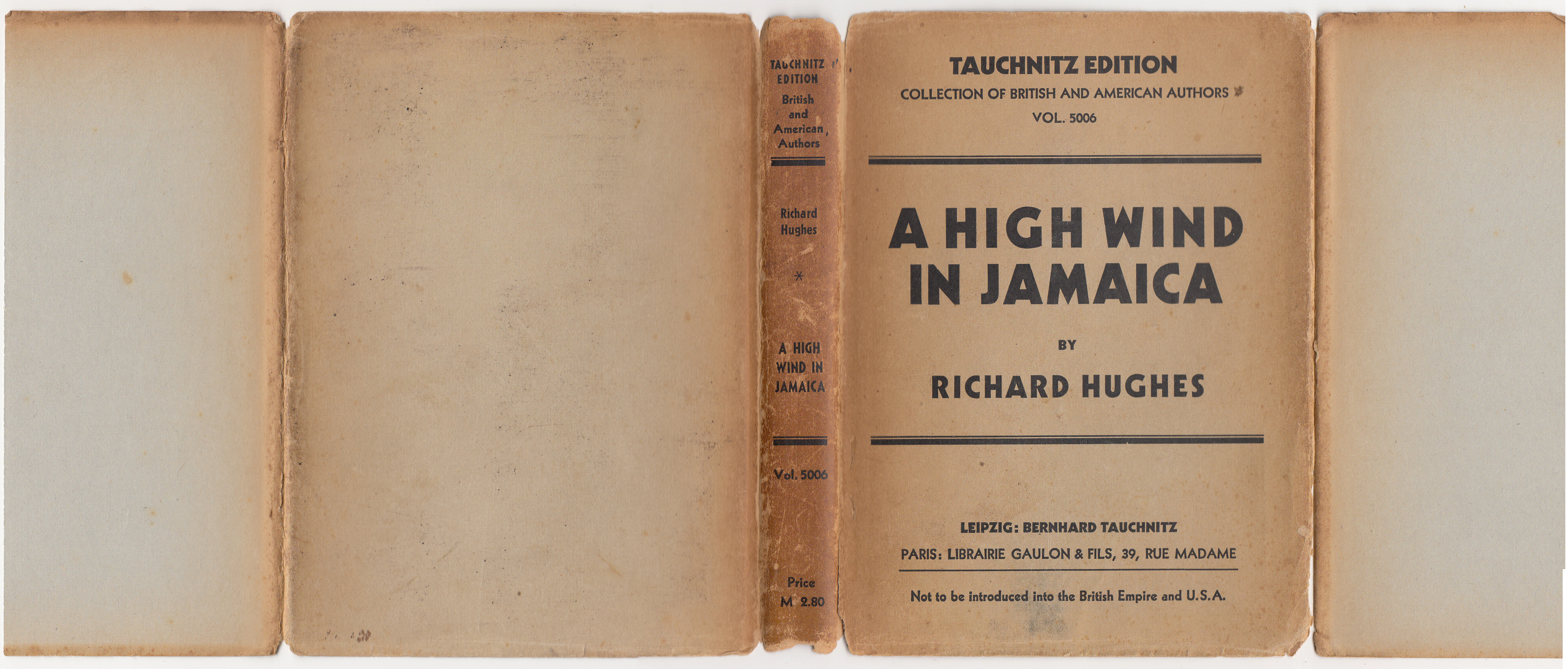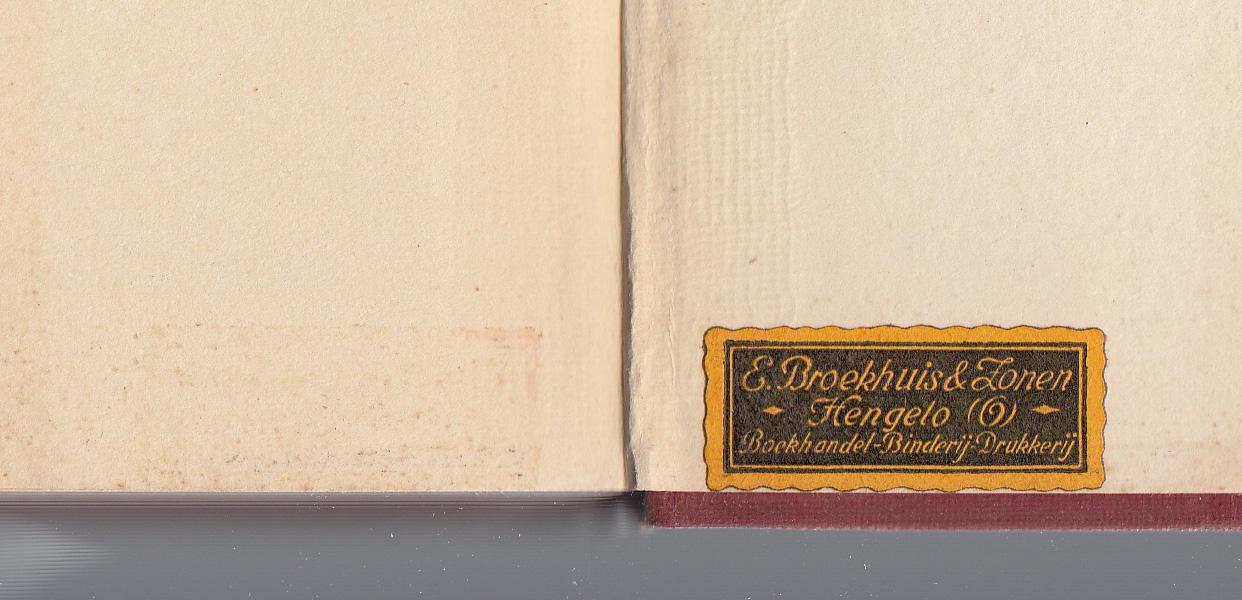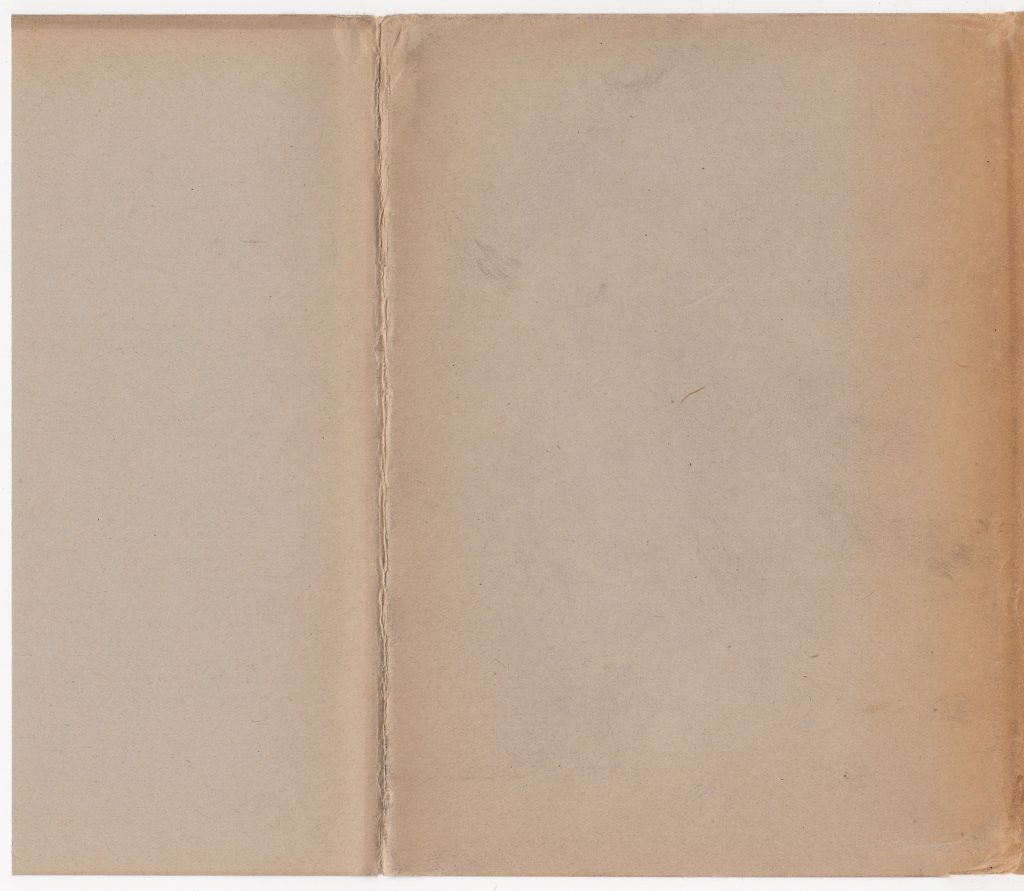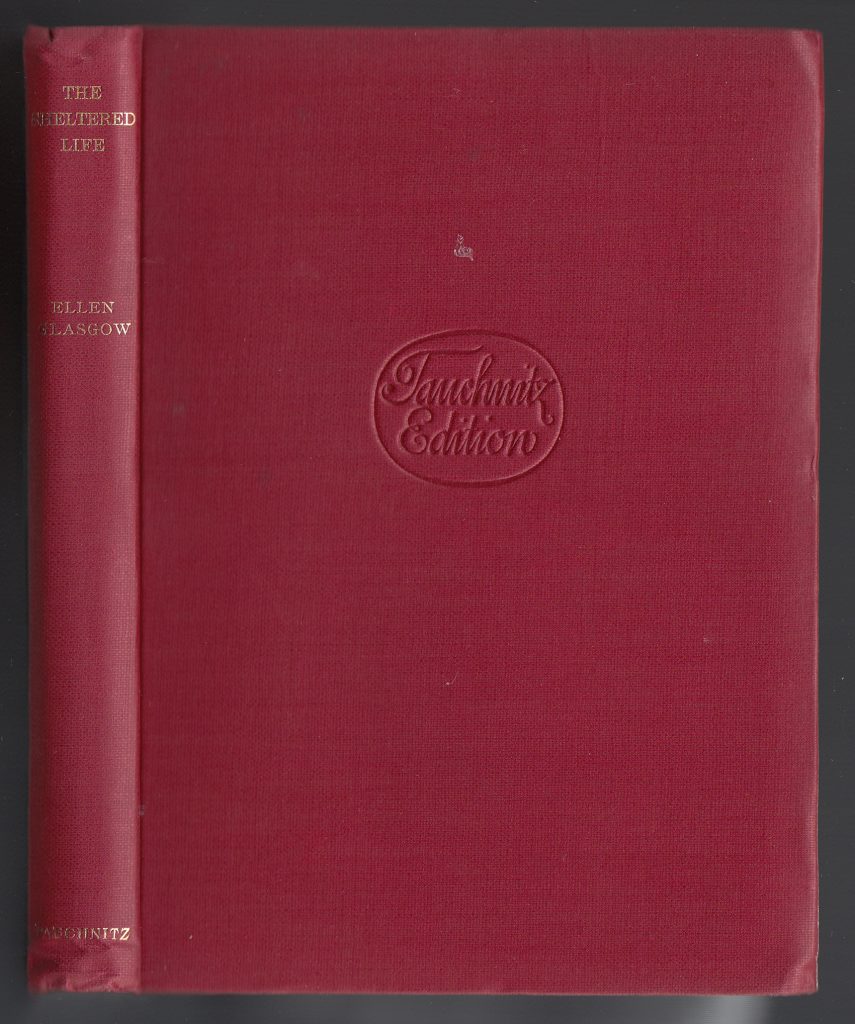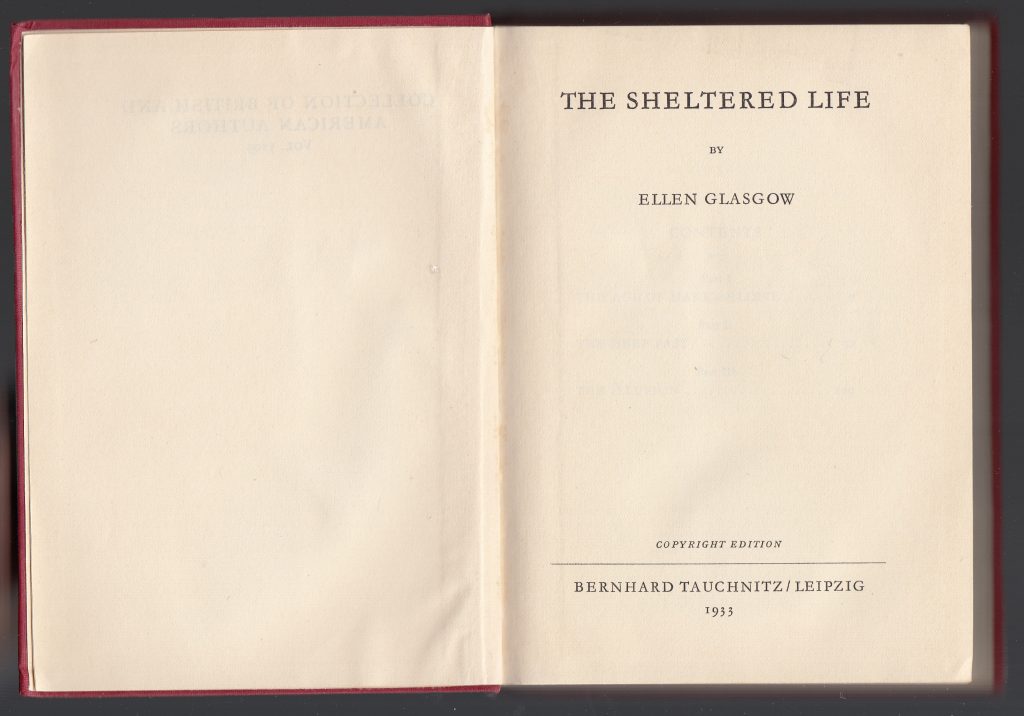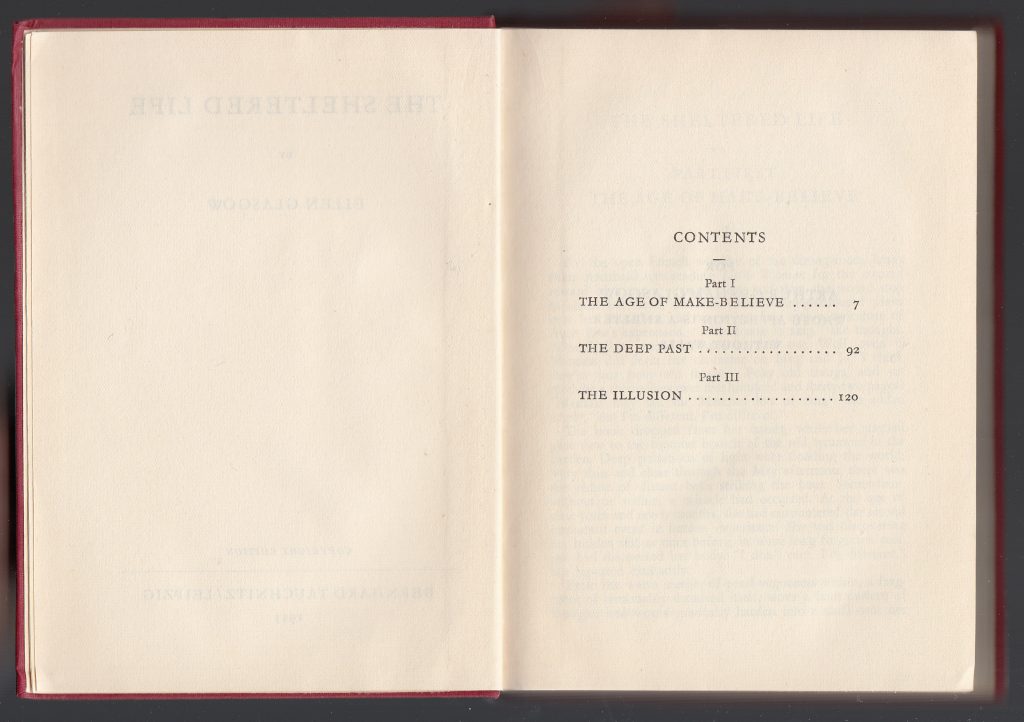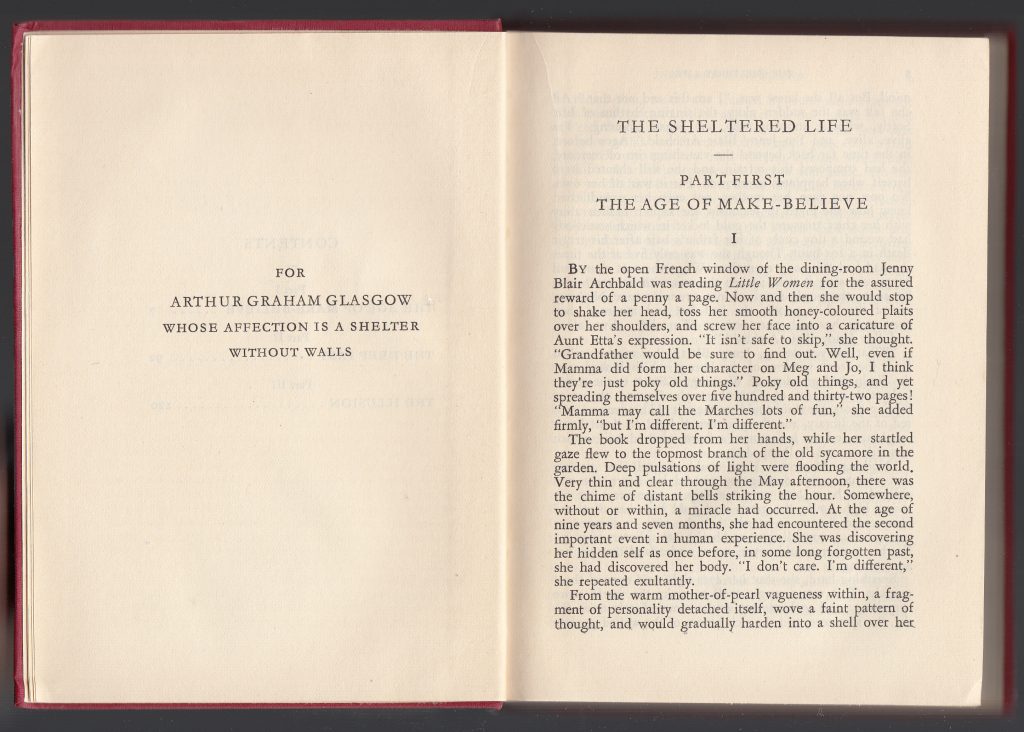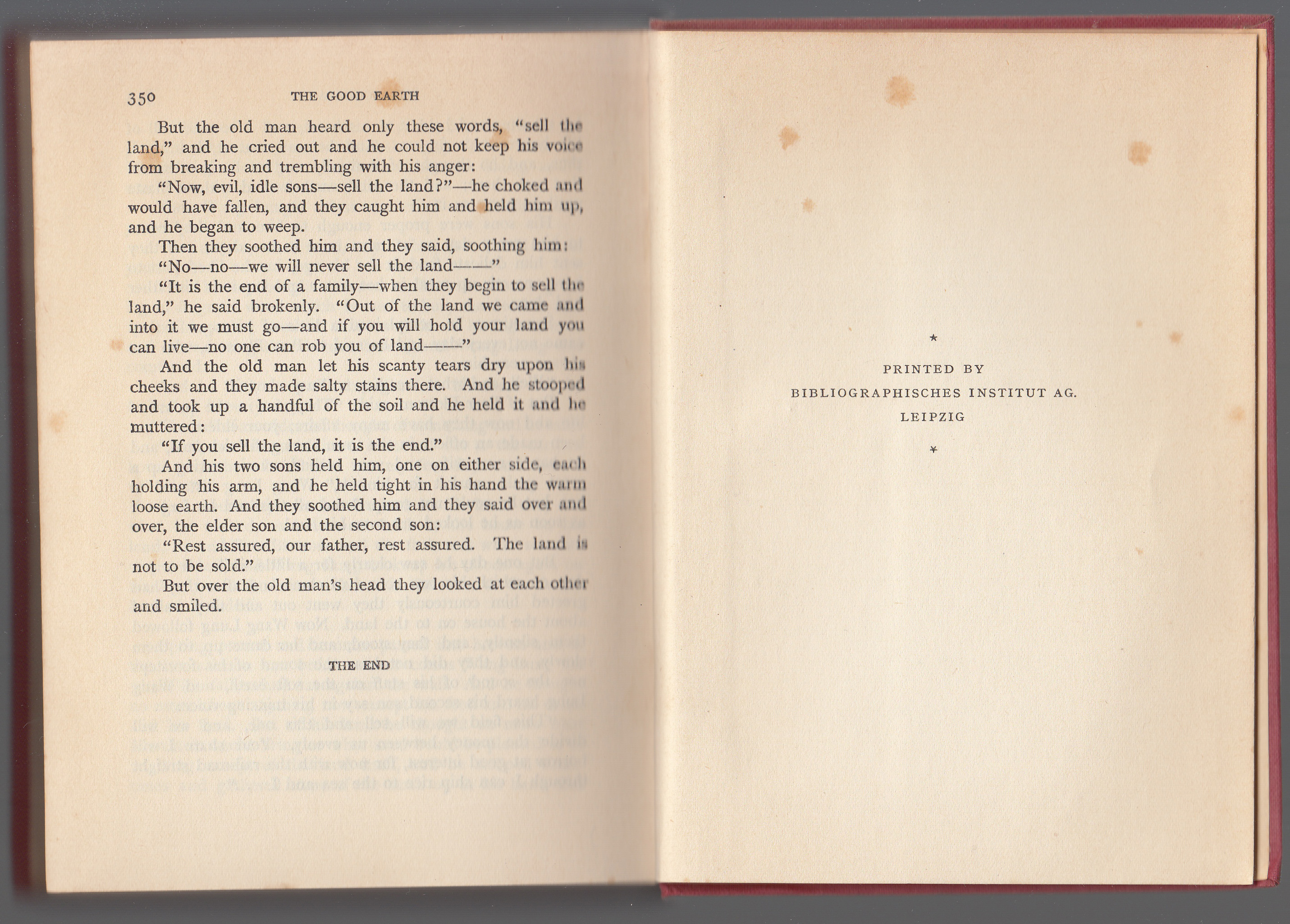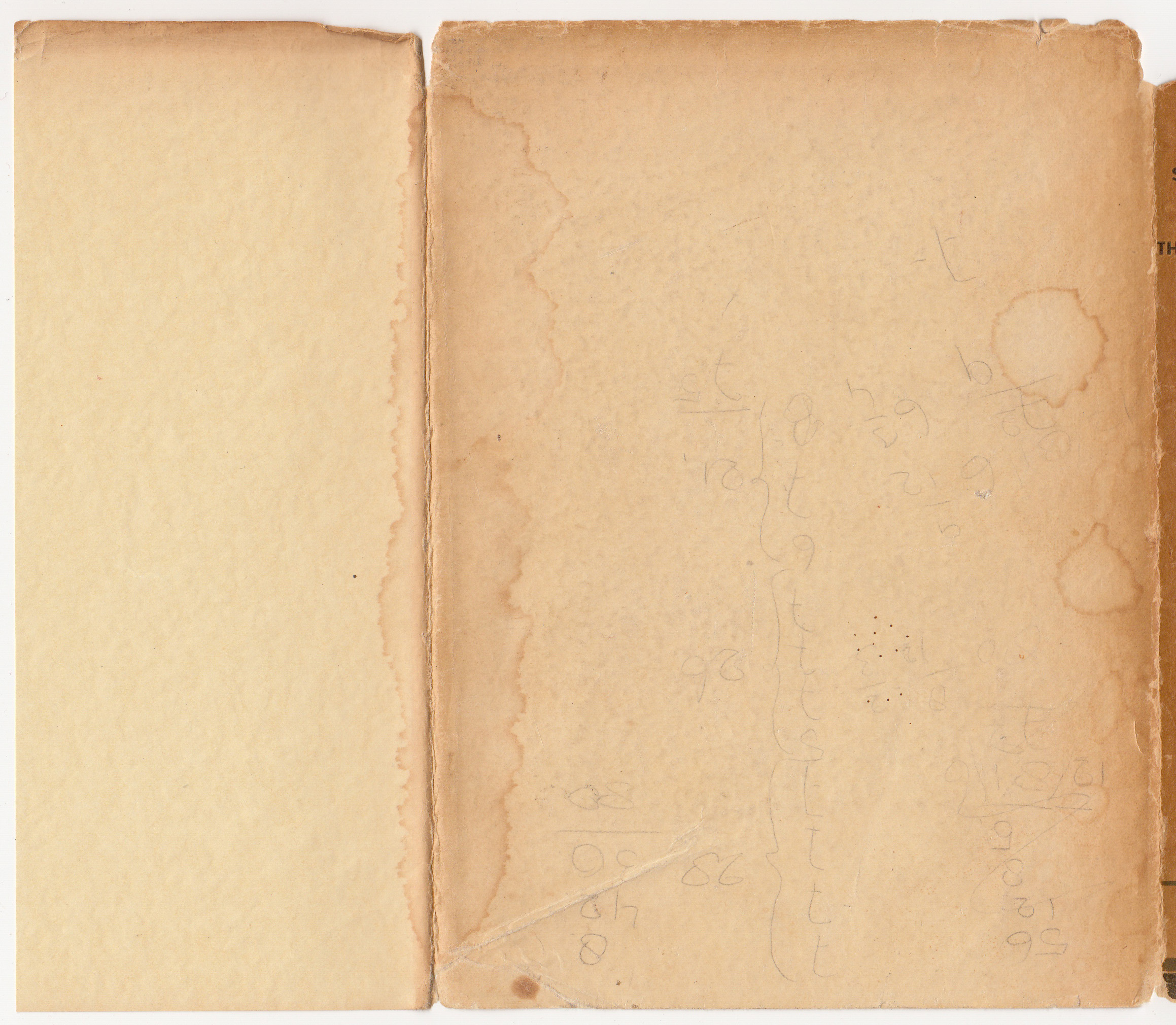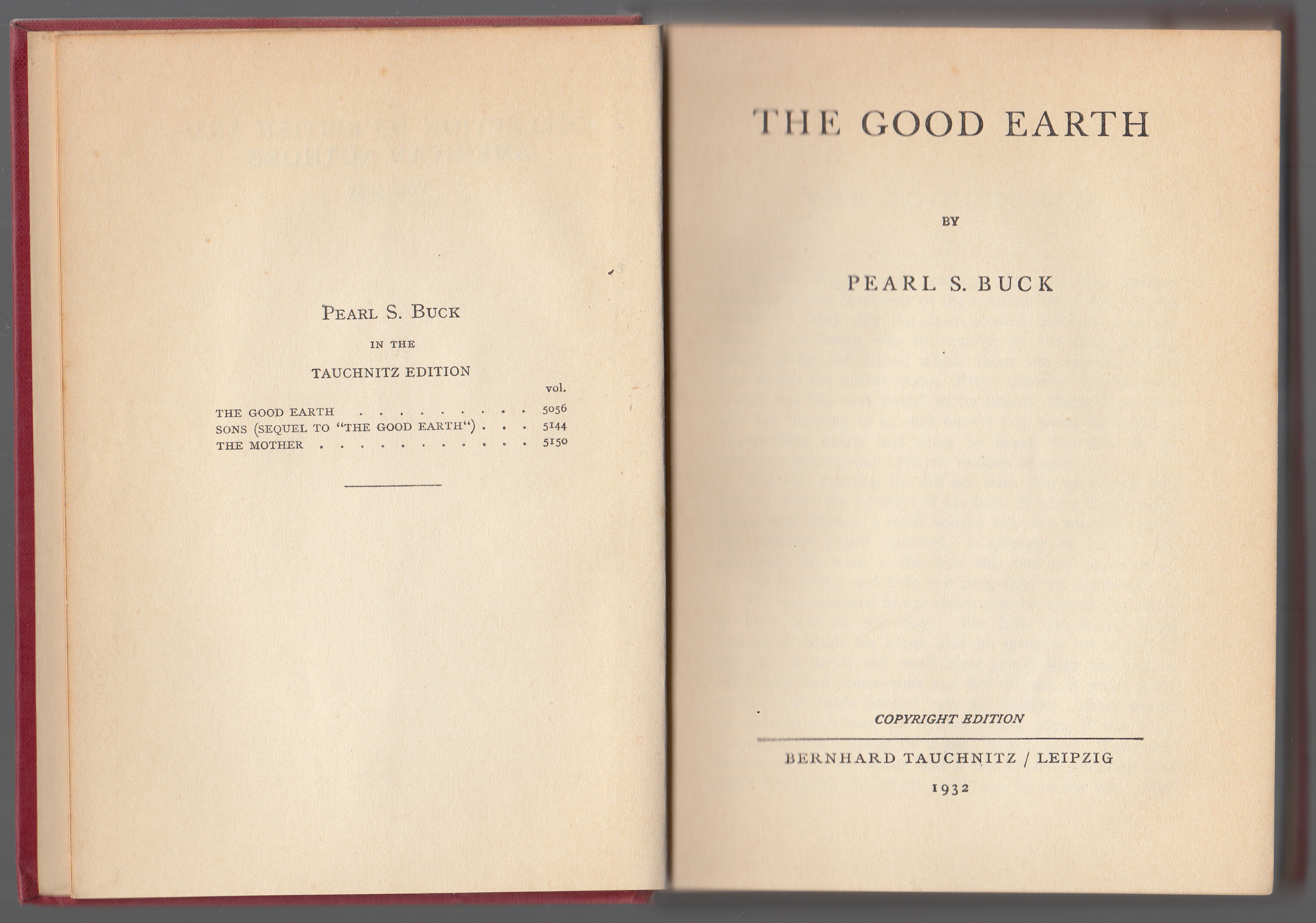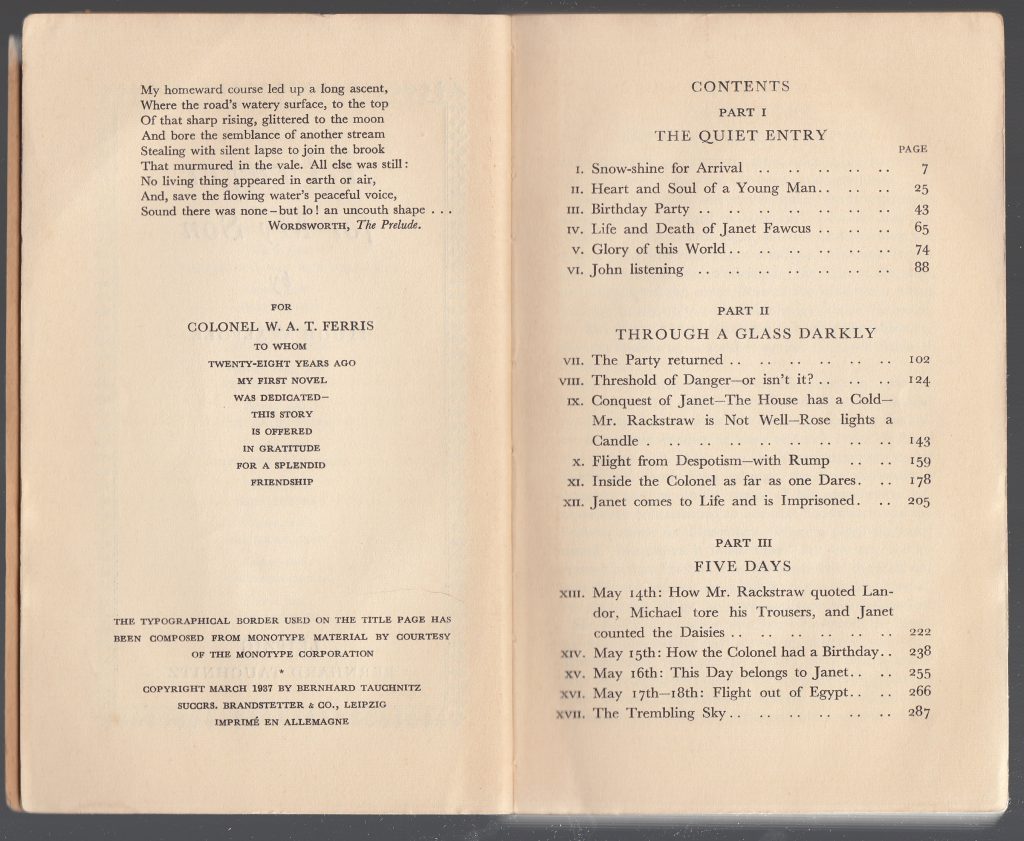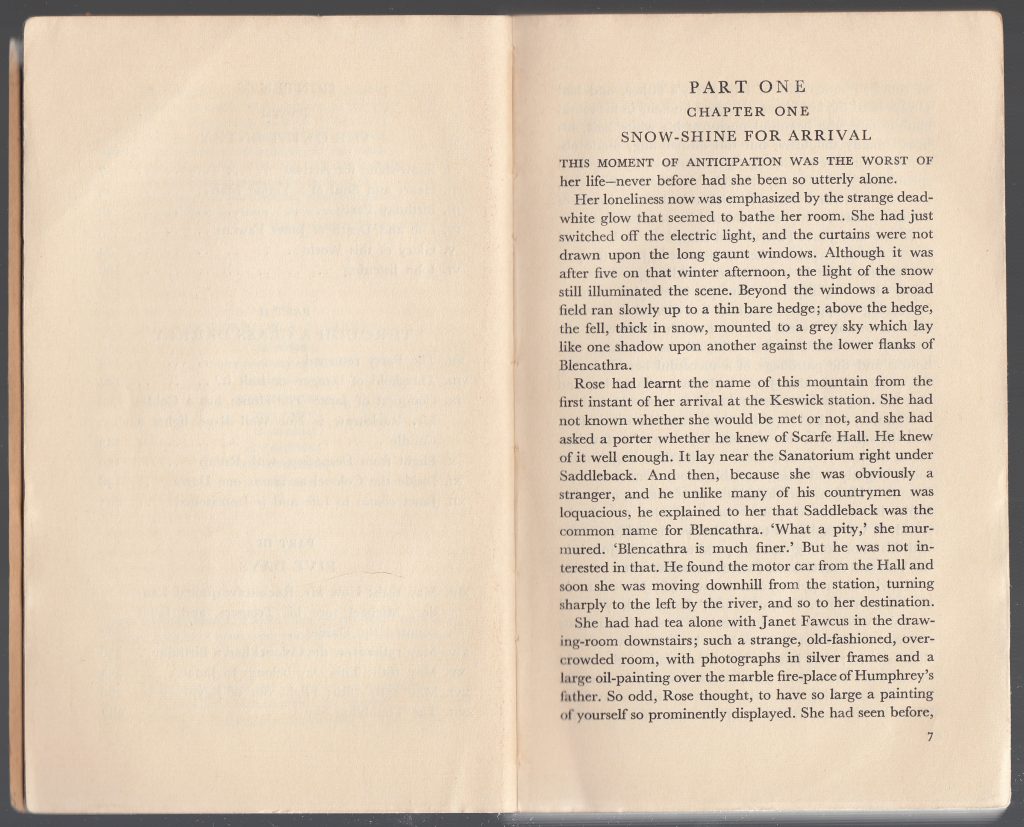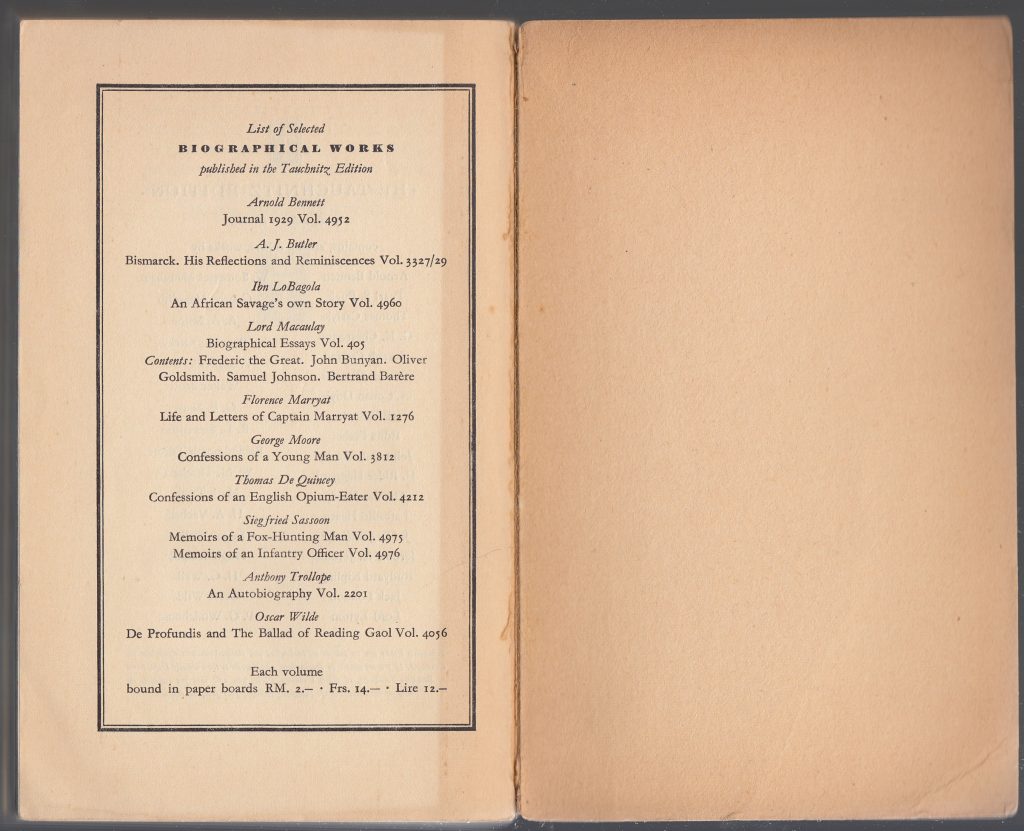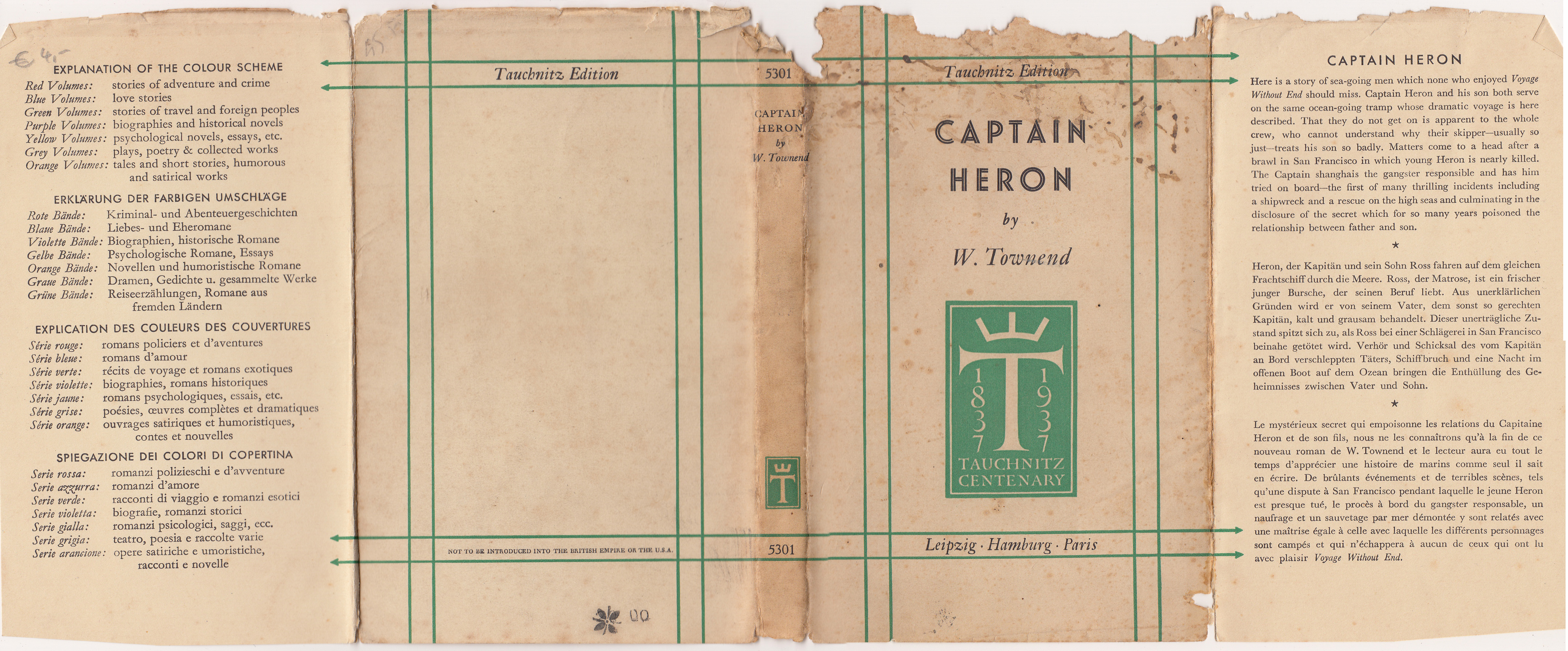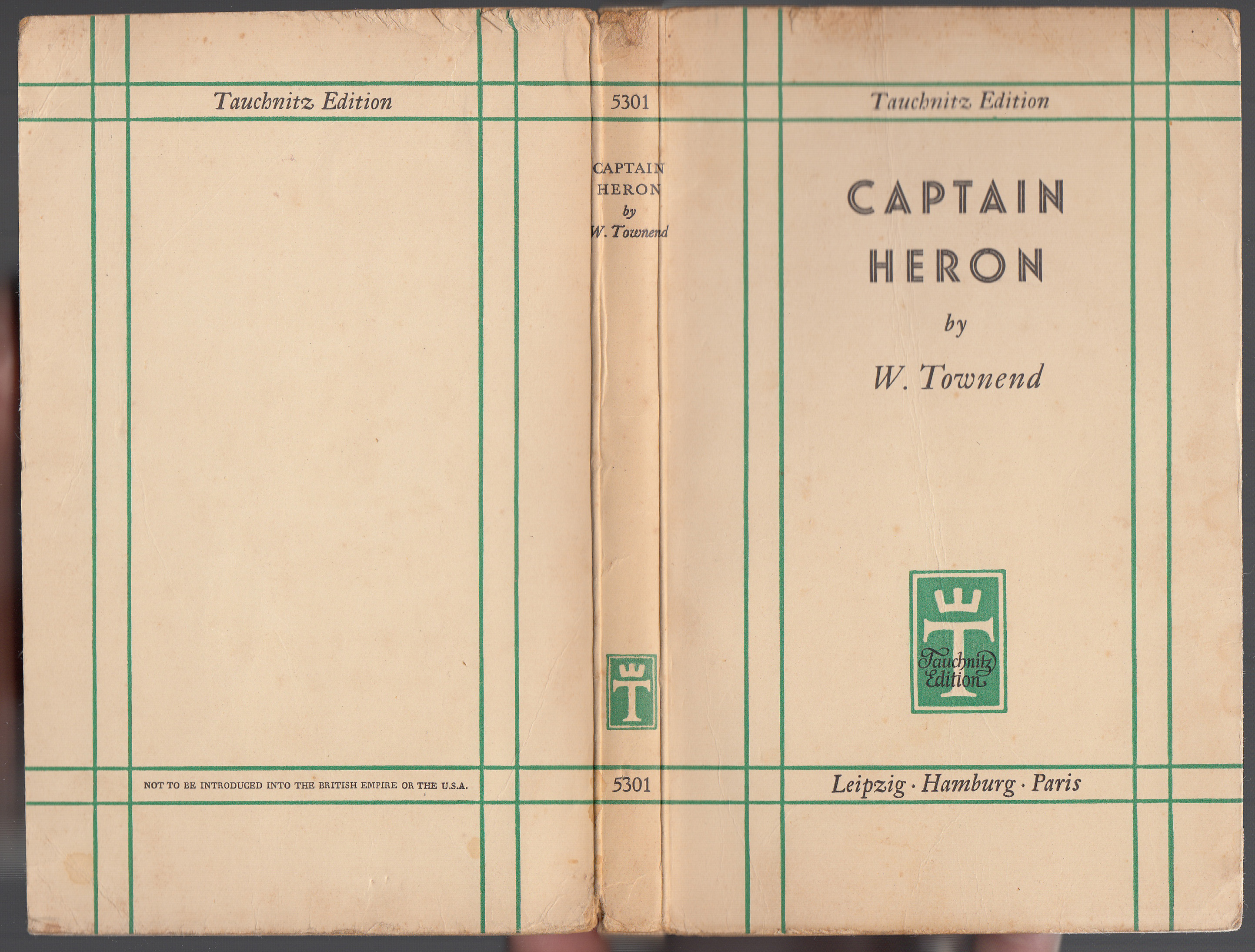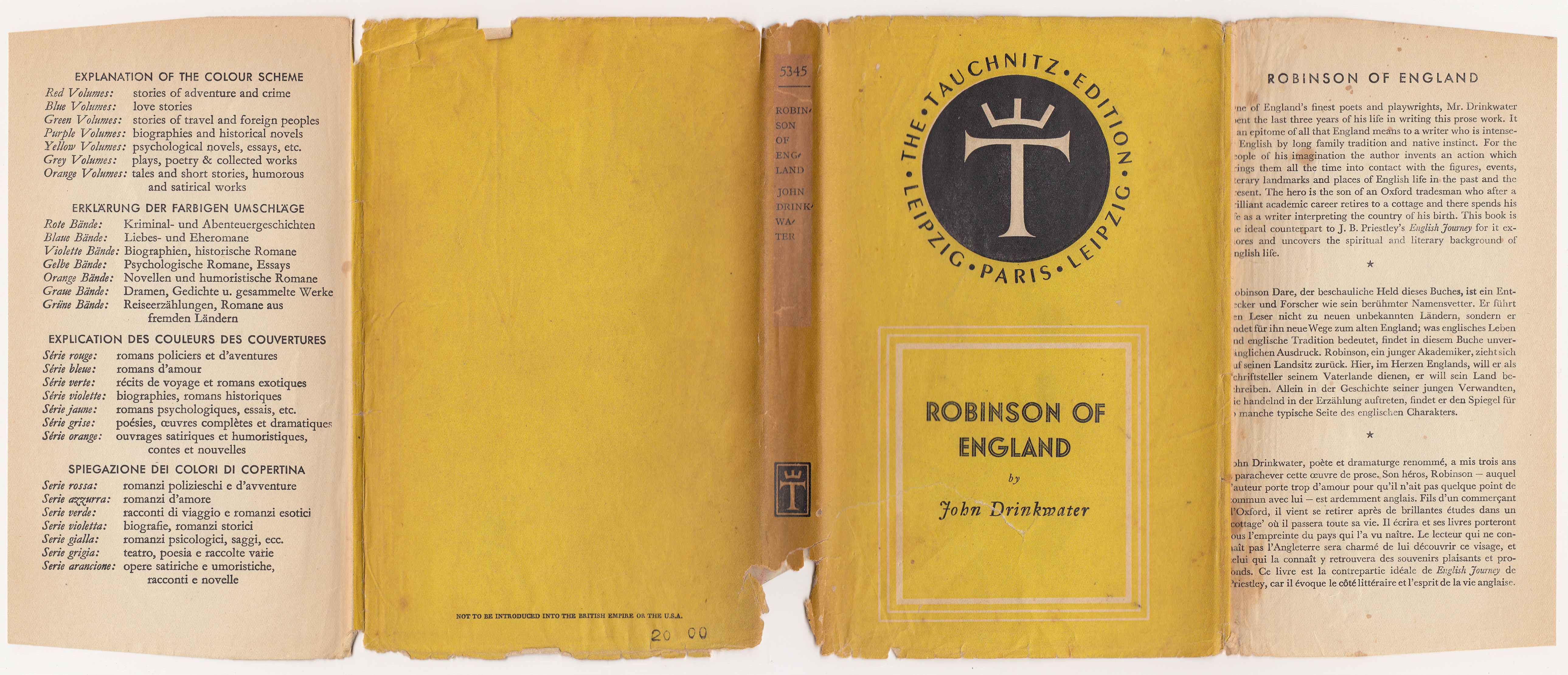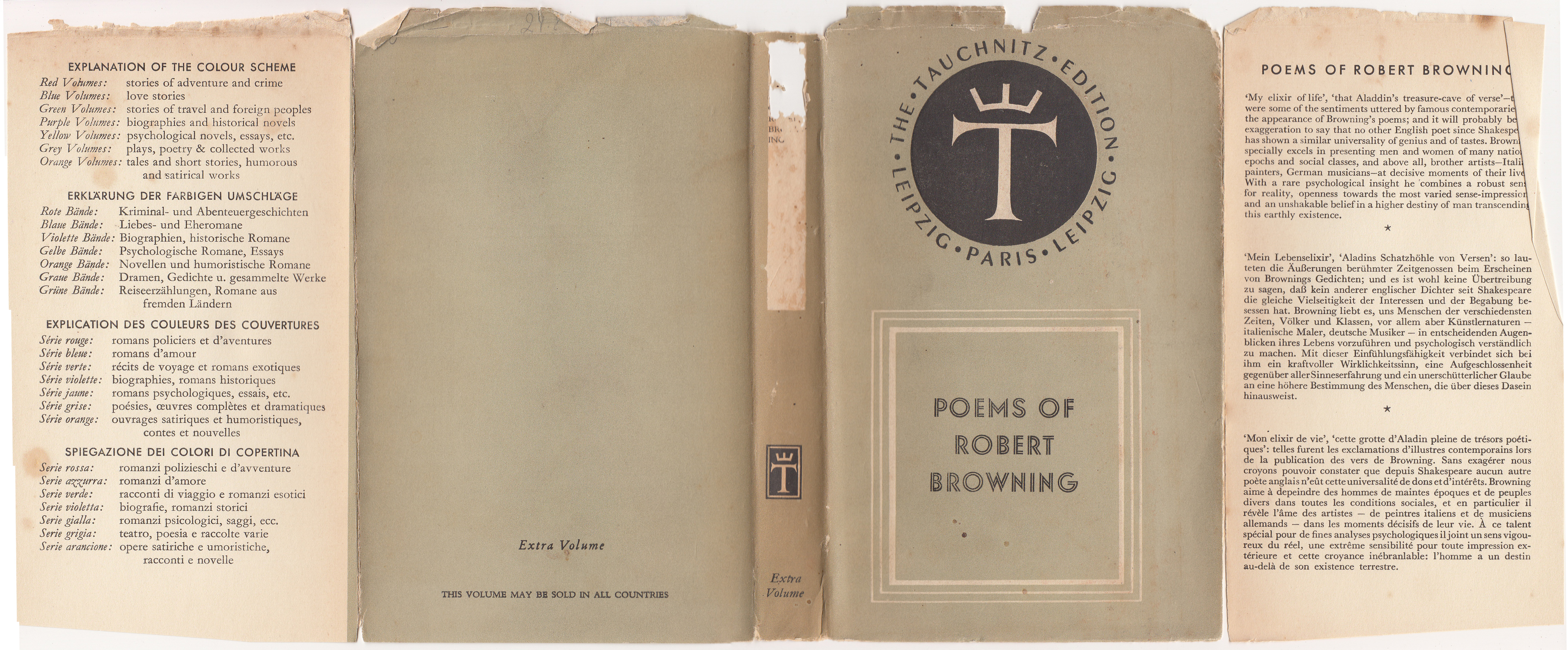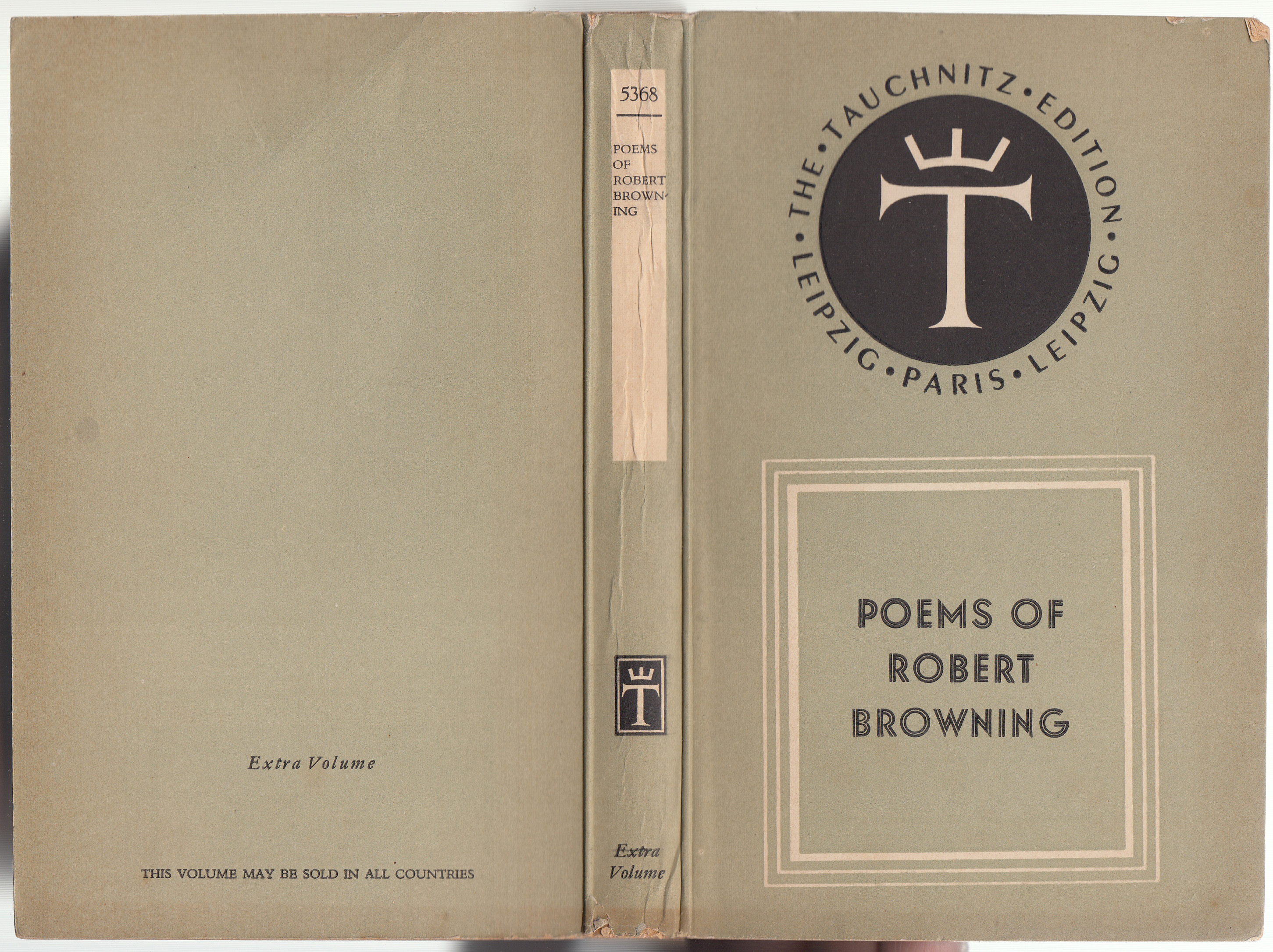aka/ Collection of British Authors (1842-1900)
aka/ Collection of British and American Authors (1900-1943)
aka/ Tauchnitz Collection of British and American Authors
Bernhard Tauchnitz (Leipzig, Germany)
Series dates: 1842-1943
Size: 6.5″ x 4.75″ (paperbound, pre-1937); 7″ x 4.5″ (paperbound, post 1937) and 6.5″ x 4.75″ (clothbound, post 1930)
The Leipzig publisher Bernhard Tauchnitz was among the most important international publishers of the 19th and first half of the 20th centuries. Tauchnitz’s innovation was to publish new titles in English, typically within a short time of their issue in England and the US, in markets outside of the UK and its colonies. In some cases, titles (such as Dickens’ Martin Chuzzlewit) the Tauchnitz Edition came out before the English edition, or after, but with changes by the authors (thus the literary interest in Tauchnitz Editions). This is similar to modern book clubs (who issue books to club members at the same time they are published by a traditional publisher). Initially, then, Tauchnitz was not a reprint publisher, but rather a publisher of international English-language editions issued about the same time as the title in the UK and US. The success of the series and demand for titles soon led Tauchnitz to issue older titles (so actual reprints) along with the modern authors.
Tauchintz was also an early innovator in the publishing of paperbound books. The majority of their titles were sold as paperbound, although many were bound by Tauchnitz and paperbacks were often rebound by their owners. Because of the likely rebinding, the paper and binding used by Tauchnitz for its books were above average in quality, and suitable for binding. Tauchnitz was also an important player in the development of international copyright.
International copyright was weak during much of the 19th century. English language books were commonly published and sold throughout Europe (and beyond) without any payment to the authors. Tauchnitz countered this trend and sought agreements with authors to publish their books and pay royalties. This approach to publishing international authors was both an ethical and smart business move, as it encouraged good relations with authors, who would often allow their new books to be issued outside of the UK, colonies, and US ahead of Tauchnitz’s competition (who typically paid no royalties).
Established in 1837, Tauchnitz specialized in publishing foreign (non-German) language titles, especially those written in English. In 1842 the Tauchnitz Collection of British Authors series was established: the first title was Bulwer “It was a dark and stormy night” Lytton’s novel Pelham. The series name was modified to the Tauchnitz Collection of British and American Authors around 1895. This name change was problematic as Tauchnitz managed to keep all of its titles in print until near the end of the series in the 1930s. Something as simple as a series name adjustment meant plate changes for the wrappers and front material for all of the thousands of series titles. Thus it was not until 1914 (#4477) that the new series name was used on the wrappers of the paperbound books, and 1930 (#4917) that the new series name was used on the half-title page.
Tauchnitz was significantly weakened by factors related to WW1, and increasing competition led to a decline in is fortunes in the late 1920s and 1930s. For example, German competitors challenged Tauchnitz, including the English Library published by Internationale Bibliothek (Berlin) from 1921-1926. The series lasted until December 1943, when the Tauchnitz facilities were seriously damaged in a bombing raid. The Tauchnitz name was used, intermittently, through the 1960s, but the original series and firm ended during WW2.

While Tauchnitz issued a few other series, the Collection of British and American Authors was the publisher’s primary focus. When the last book in the series was issued in 1943 the number of titles issued had reached 5,370, well beyond the 1000 or so ultimately issued by Everyman’s Library and the 900 or so issued by Oxford University Press under the World’s Classics series name.
The final volume printed in the series was a reprint of #4995, P.G. Wodehouse’s Summer Lightning. This title (originally issued in 1931) was reprinted in September 1943. The last title in series order was #5370, P.G. Wodehouse’s Money in the Bank, issued in September of 1943. Money in the Bank was written while Wodehouse was held in a Nazi internment camp. The Tauchnitz plant was mostly destroyed a few months later, on the 3rd and 4th of December, 1943.
Paperbound (Wraps) Tauchnitz Editions
The vast majority of Tauchnitz series titles were paperbound. The paper bindings are also known as “wraps” or “card bound.” When the term “wrapper” is used in this context, it means the heavier paper cover of a paperbound book (which is glued to the binding).
The design of the books was remarkably constant over the years. In large part, this was because Tauchnitz (up until the 1930s) kept every title in print. Thus style changes meant going back and resetting the typography for many hundreds of titles, originally set in the older format. From 1842 until the early teens the design of the book covers was relatively consistent. A redesign around 1915 resulted in a cleaned up, more modern design (that still, nevertheless, evoked the earlier layout).
The two-volume copy of Edward Bulwer’s A Strange Story issued first in 1861 (vol. 1) and 1862 (vol. 2) catches the series in its first major design transition. Volume 1 (#569) has a catalog dating the volume to April of 1913. Volume 2 (#570) has a catalog dating the volume to 1919. This is also the time when the series name transformed from “Collection of British Authors” to “Collection of British and American Authors.” This change was gradual, from 1895 to 1930. Again, the effort to reset the many previously issued titles was daunting.
A Strange Story was, as with many Victorian novels, issued in serial form (in this case, in Blackwood’s Magazine). Tauchnitz issued the title in its 10 serial parts, then issued (in 1861 and 1862) the two-volume set. The first UK edition of the book was published in 1862. It is not uncommon for Tauchnitz titles to have been issued before the UK editions, and sometimes from proofs of the UK publication.
The designs for Tauchnitz wrappers were common to all titles in the series. The earlier design (left) wrapper spine includes the original series name (“British Authors”), series number, author, title, volume number, and price. The front of the jacket includes the series name, larger and more prominent than the series number, title, and author. The imprint of the publisher is included at the bottom. A note at the bottom indicates that the volumes may not be introduced to Great Britain or its colonies. A note at the top indicates the two volumes are sold separately.
It was not uncommon for Tauchnitz to issue novels in two and even three-volume sets. In some cases, this was due to the book-length (the common Victorian era “triple decker”), but in many cases, multiple volumes were a means of making more money by selling two volumes rather than one. In a few cases, Tauchnitz massaged the type size and margins to stretch a novel to fit in two volumes.
The redesigned wrapper (right) spine expands the series name to “British and American Authors,” but otherwise maintains the information on the spine. The front of the wrapper shows a significant redesign in a modern style: the series name is at the top, but smaller, now, than the title and author. Both notes (volumes sold separately, and command that no titles be brought into the UK) are now at the bottom.
 |
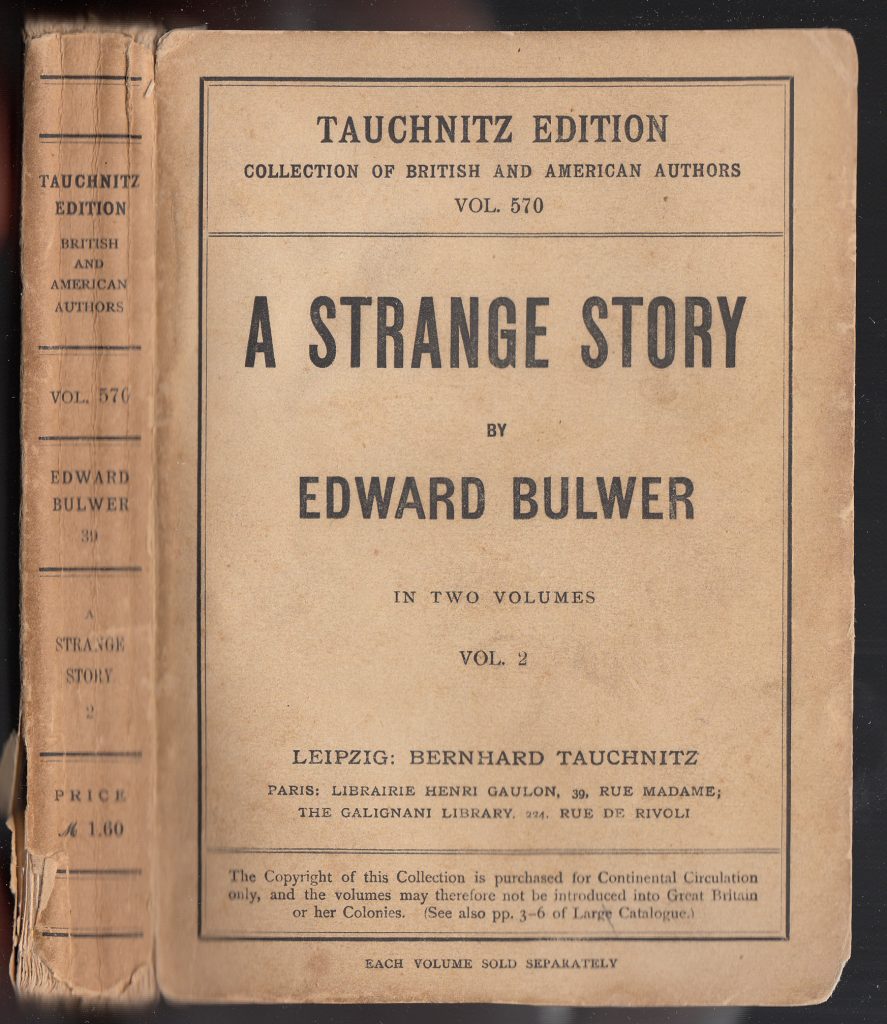 |
The rear wrapper contains a list of the latest volumes issued in the series, along with a date. Tauchnitz typically left the original year of publication in the book itself. Without the wrappers, then, it is nearly impossible to date a Tauchnitz volume. Many rebound copies have the wrapper removed, leaving the volumes difficult if not impossible to date.
The April 1913 rear-wrapper list (left) is not that different in design from the July 1919 rear-wrapper list (right). The latest title in the 1913 list is #4398 and the latest title in the 1919 list is #4526. Notes at the bottom detail cost and binding options.
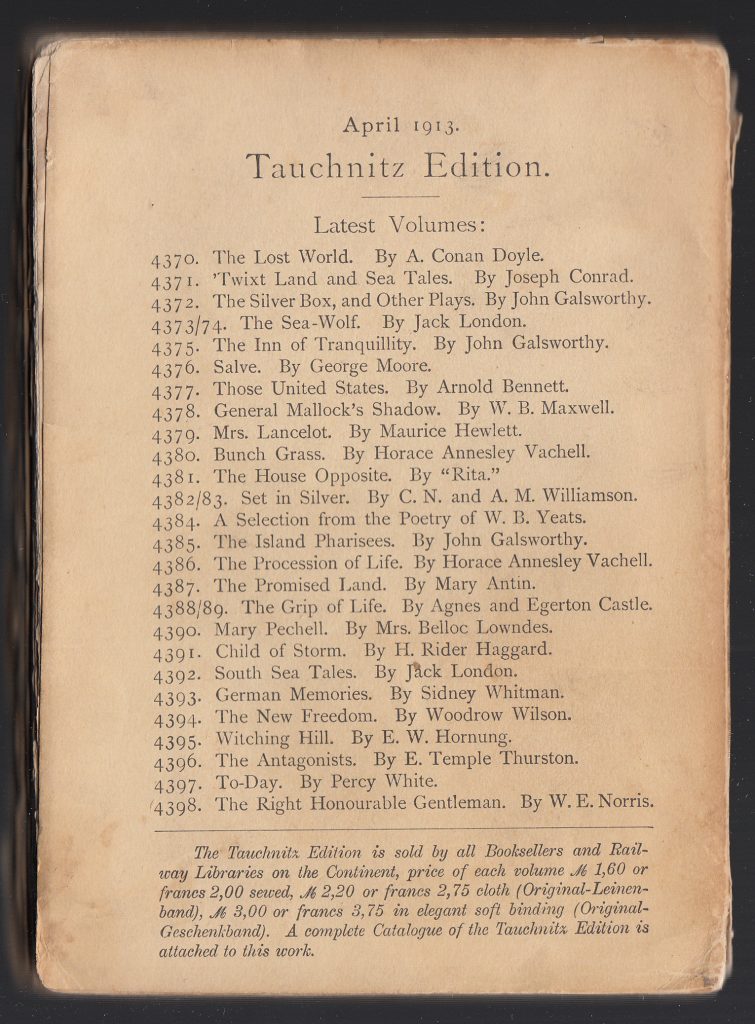 |
 |
The half-title pages remain largely unchanged in the original and redesigned volume. The paper quality is very good, making the books viable candidates for rebinding.
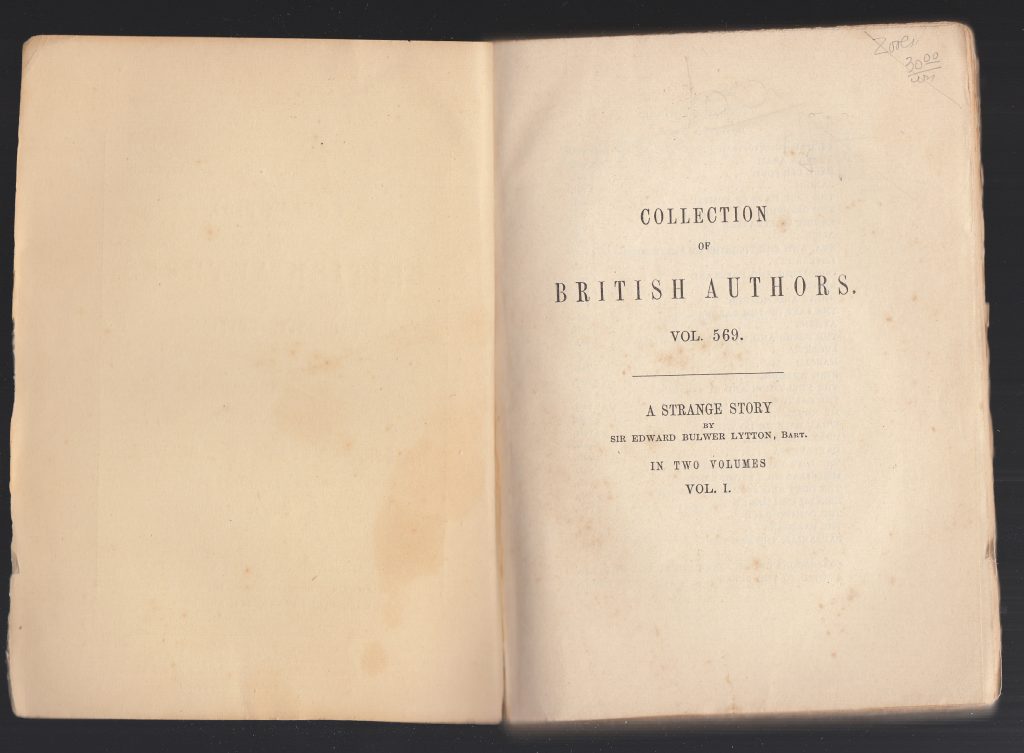 |
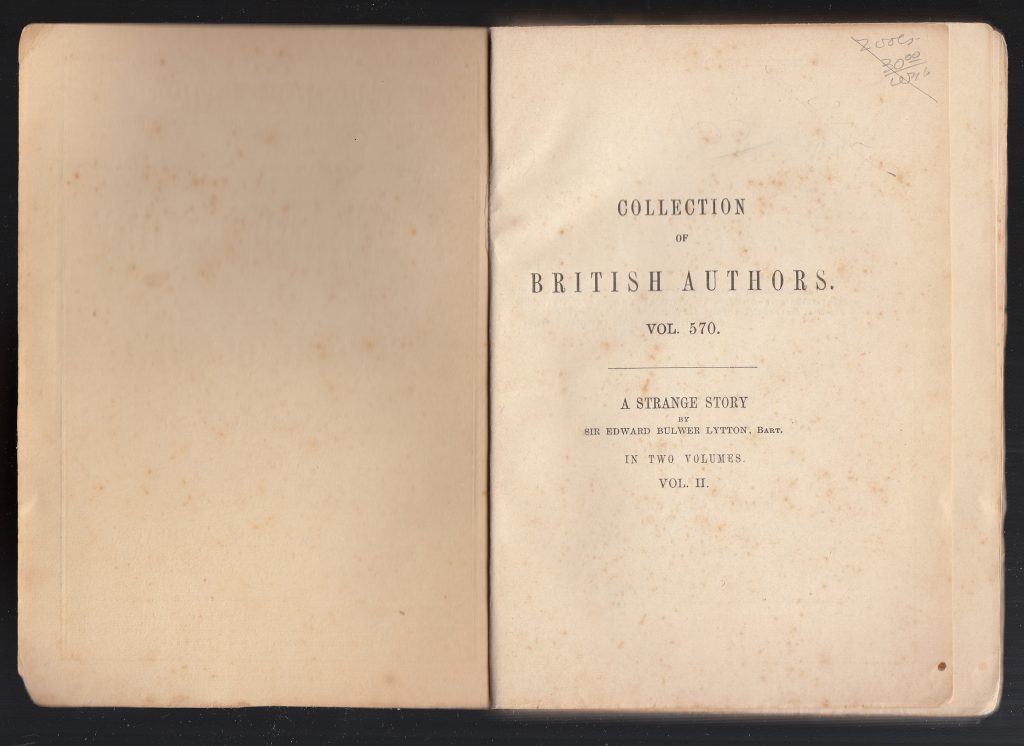 |
The title pages also remain largely unchanged. In the volume on the left, a list of other titles by the author in the series is listed. A quote faces the title page in the copy of volume 2 (right). Both include the original dates of publication in the series, 1861 and 1862. This is often mistaken for the actual publication year of the book. Again, the catalog is the best way to date these books.
 |
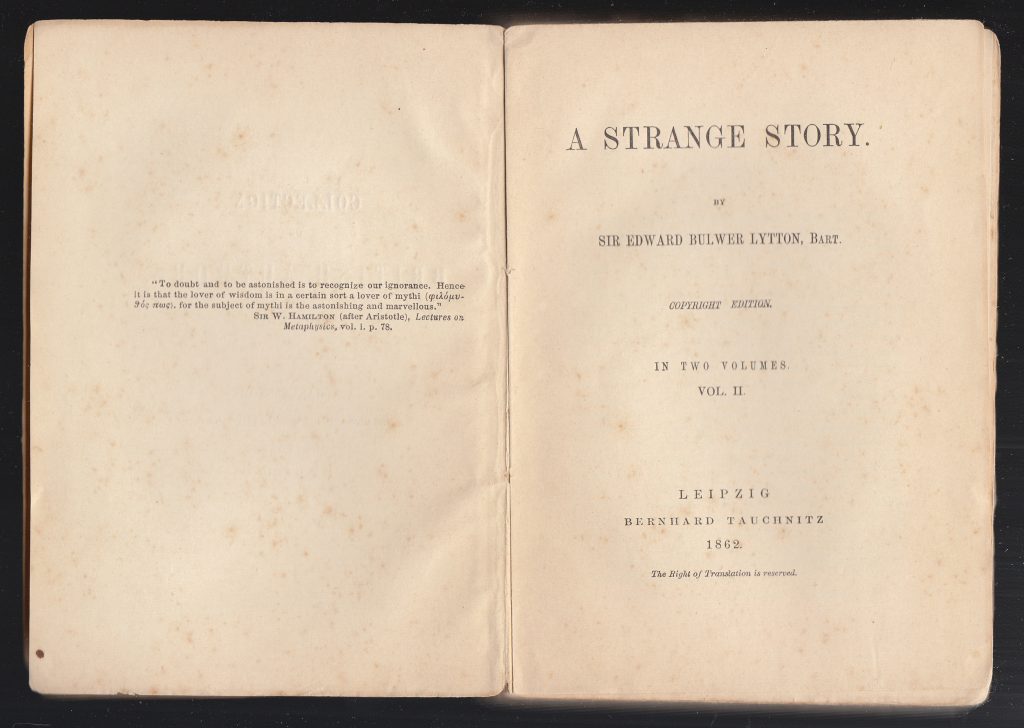 |
The first page of text in the older and newer design.
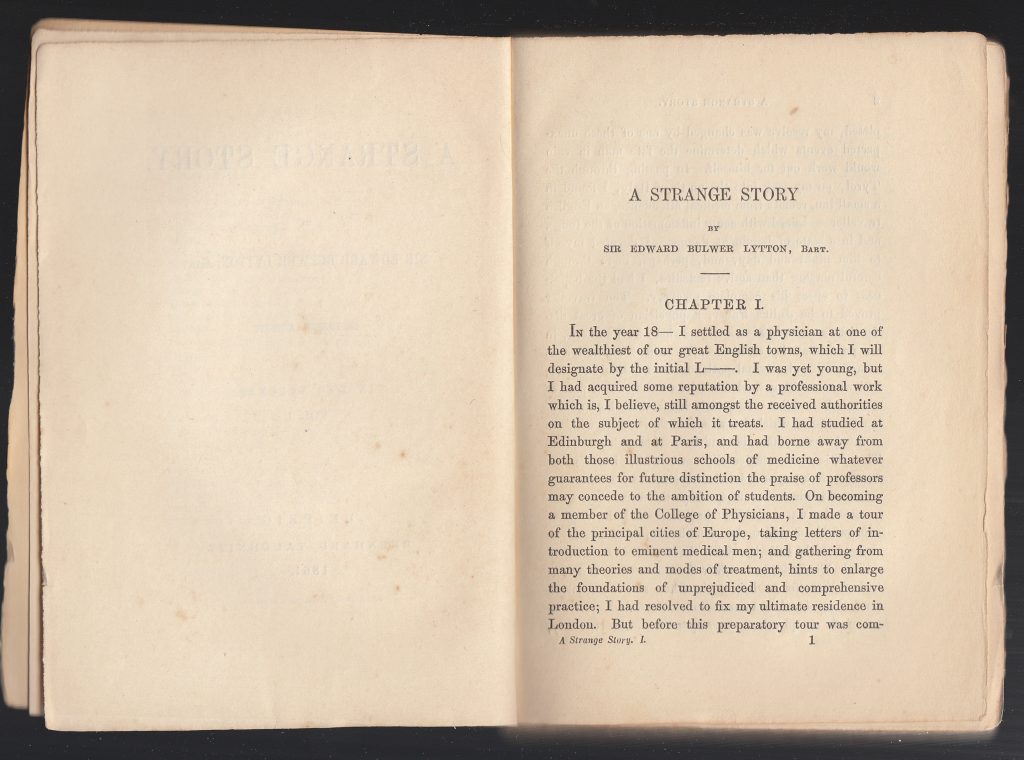 |
 |
Bound-in Catalogs
Tauchnitz editions occasionally include a bound-in catalog in the rear of the volume. The example below is from a copy of Frances Elliot’s Old Court Life in France, printed in January 1926.
The initial page lists new titles (also listed on the back of the book’s wrapper). At this time, there were 4720 numbered volumes in the series. All titles were available through the early 1930s. The second two-page spread (right) begins the list of regular titles in the series. I skipped most of the somewhat lengthy catalog. The final pages list other Tauchnitz series: Series for the Young (30 volumes), Collection of German Authors (51 translated volumes), Student’s Series for School, College, and Home (41 volumes), Biblioteca Rojo Y Azul (10 volumes, in Spanish), Englische Bibliothek (4 volumes, in German), Beitrage zur Englischen Philology (4 volumes, in German), Shakespeare’s Plays, miscellaneous titles on literary and artistic topics, and a series of dictionaries.
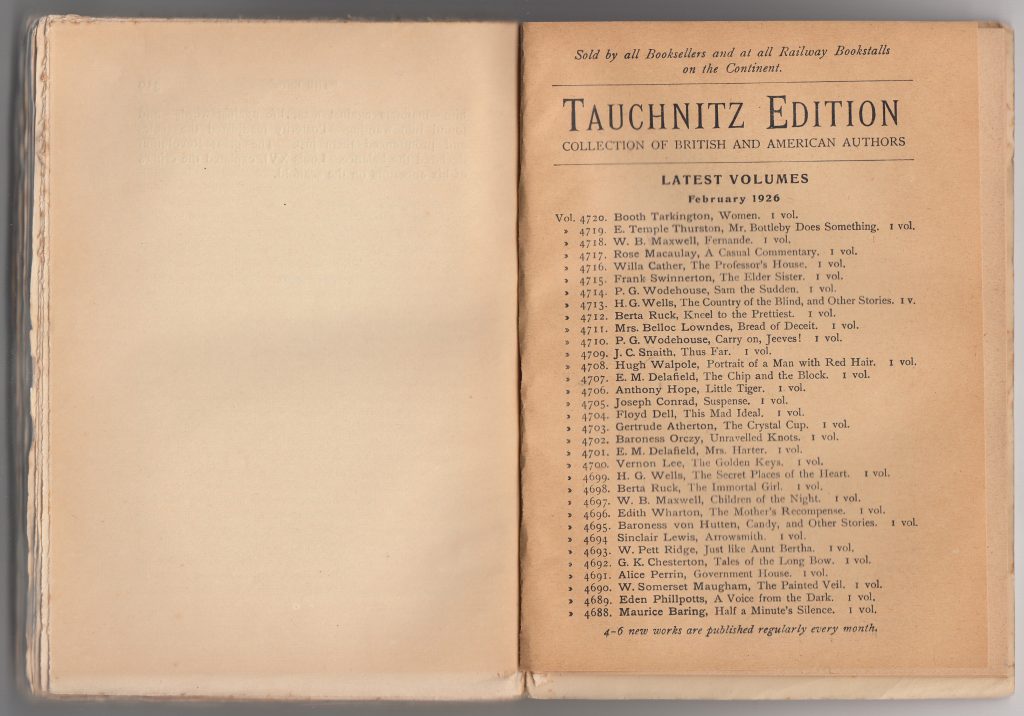 |
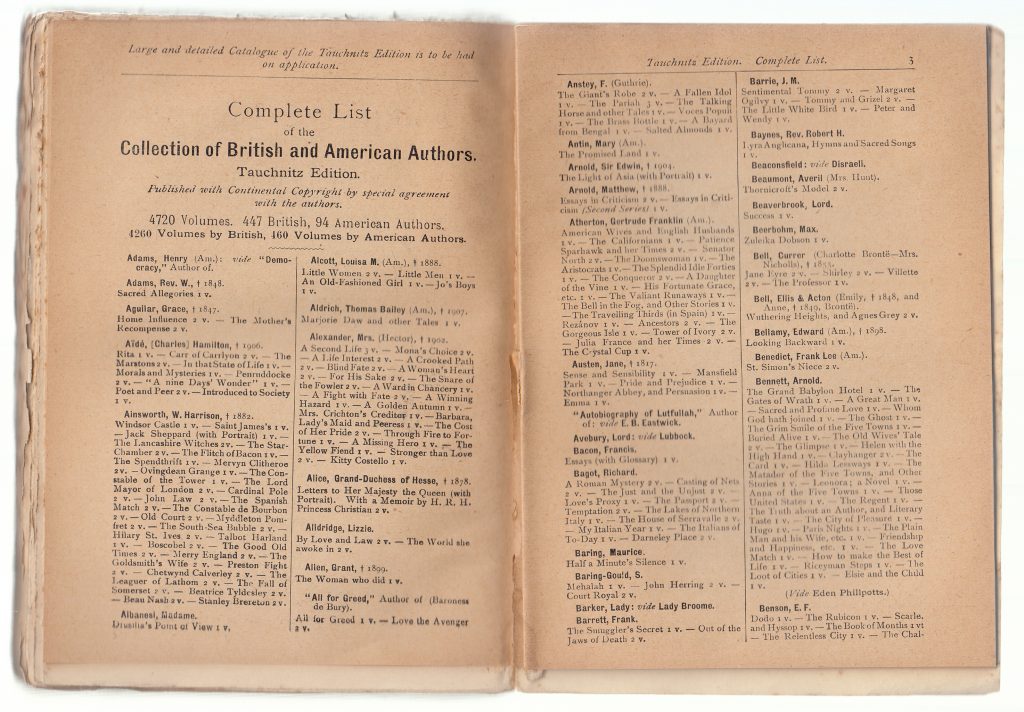 |
| …skipping a dozen pages or so… |  |
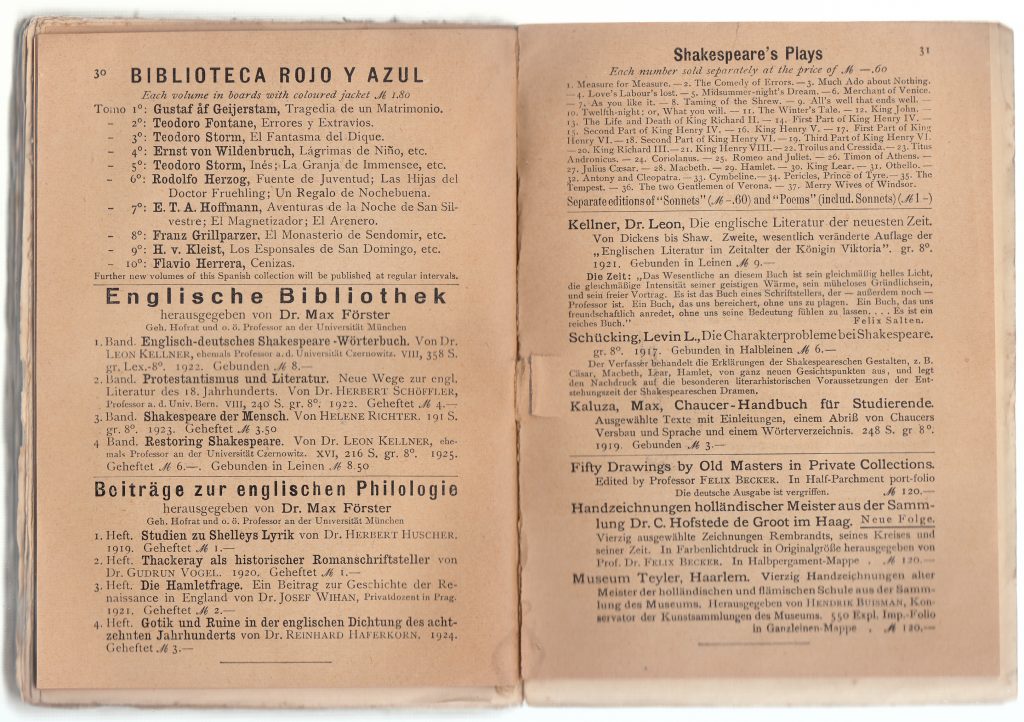 |
 |
Clothbound Tauchnitz Editions:
Tauchnitz books were often rebound by their owners, and a panoply of non-publisher bindings can be found. Tauchnitz also sold hardbound copies of titles in the series, in many dozens of styles with little consistency over the years. Tauchnitz-hardbound titles were offered from the start of the series (1842) but were not consistent in style until 1909. Some were bound by Tauchnitz, others sent for special bindings by external binders. Many dozens of binding styles are documented in the Todd and Bowden book.
The first consistent series of clothbound Tauchnitz Editions were issued between 1909-1929, in maroon cloth. But even here, there are a half-dozen variations. A more elaborate “gift binding” was also offered. 416 titles were available in these hardcover bindings.
In 1929, a redesigned leather binding was offered on 71 titles. Soon after, in 1930, red clothbound titles appeared. Series numbers 4928-5169, probably through 5190, were available in both cloth and paperbound versions. These hard-bound titles were priced at M2.50 (compare to M1.50 for the paperbound books). At this price, they were unpopular, and, today, very uncommon. Sales were largely limited to Germany. A final cloth binding, in blue, known from only one example, was issued in 1937.
Dust Jackets on Tauchnitz Editions: Very Scarce
According to Todd and Bowden, dust jackets were used only near the end of the Tauchnitz series, covering the red clothbound titles, starting in 1930. This is strange, as German publishers had been using jackets on books since the middle of the 19th century. The general rule of thumb with dust jackets is that they were used to protect books intended for retail sale, to protect the binding during shipping and while displayed in a store. If pre-1909 hardbound Tauchnitz titles were largely special orders, they may not have had jackets (they were not going to sit on a shelf for sale). It seems possible that the maroon cloth bindings issued beginning in 1909 had jackets, particularly if they were intended for retail sale. Most series issued in the UK and US had dust jackets, after the 1870s. Alas, Todd and Bowden did not find any examples (which is possible, given the relatively small numbers of these publisher hardcovers issued). I am, however, more than a bit confused by the seeming lack of dust jacket use by Tauchnitz prior to 1930.
The red clothbound titles issued beginning in 1930 (Series numbers 4928-5169, and probably through 5190) had jackets. For the most part, these were printed on the same paper as the wraps for the paperbound books, using the same plates. The Ellen Glasgow title below (1933) is an example of such a clothbound Tauchnitz book jacket.
The identical text and graphics used on the paperbound and clothbound titles at this time make them indistinguishable in a photo (say, an image on the internet). The dimensions of the paper and cloth bound books are slightly different (the paperbound are 7″ x 4.5″ and the cloth 6.5″ x 4.75″).
There is at least one other dust jacket design from this era (below). A copy of Pearl Buck’s The Good Earth (#5056, 1932) sports a jacket that is a significant departure from the earlier designs used for Tauchnitz dust jackets and wrappers and reminiscent of the design used on US and UK reprint titles in the 1930s). The jacket even includes a quote from a review at the bottom. A stylized TE (Tauchnitz Editions) is centered on the jacket front and spine. More details on this particluar book below.
In 1935 Tauchnitz began issuing paperbound titles in a redesigned format. An Oxford frame on the front and back cover of the jacket printed in seven colors helps distinguish different categories of books. Fascinatingly, the Oxford frame seems to have been named after the similar-looking Oxford corner, 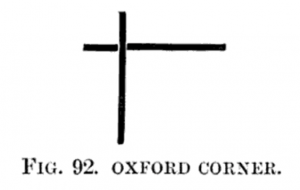 used within books for cased outlines on pages (source for illustration: Printing: A Practical Treatise on the Art of Typography, by Charles Thomas Jacobi, 1908). The Hugh Walpole title below (1937) is an example of these paperbound book jackets with the yellow Oxford fame.
used within books for cased outlines on pages (source for illustration: Printing: A Practical Treatise on the Art of Typography, by Charles Thomas Jacobi, 1908). The Hugh Walpole title below (1937) is an example of these paperbound book jackets with the yellow Oxford fame.
These paperbound titles were issued in dust jackets, over the paper book cover printed with the same exact design. Again, this makes it difficult to tell if a book has a jacket or not in a photograph. The color scheme on the paperbound book covers and jackets:
Red: Adventure and Crime
Blue: Love Stories
Green: Travel and Foreign Peoples
Purple: Biography and Historical Novels
Yellow: Psychological Novels, Essays, etc.
Grey: Plays, Poetry and Collected Works
Orange: Tales and Short Stories, Humorous and Satirical Works
Redesign of the paper wrappers and dust jackets on paperbound titles occurs in 1937 (the centenary of the Tauchnitz firm) and 1938. The design of the wrappers and jackets, with its full-color design, is a significant evolution towards the design used on other late 1930s paperbound and clothbound series books. These changes appear to be an attempt to bolster the declining series, pummeled by competition from a growing number of paperback competitors.
Additional resources:
Tauchnitz Editions collectors website is here.
Related website Paperback Revolution is here.
Bibliography: William B. Todd and Ann Bowden. Tauchnitz International Editions in English, 1841-1955, A Bibliographical History. New Castle, DE: Oak Knoll Press, 2003.
Complete Catalog of the Tauchnitz Edition of British and American Authors, 1905. This includes the series titles up to #3812.
Clothbound Tauchnitz Editions in dust jackets are very scarce. Officially (according to the Todd & Bowdon) such jacketed titles only appear after 1930. Tauchnitz clothbound editions were not sold in the US or British Empire, and it seems that few of these clothbound titles left Germany. They were also made in much smaller quantities than the paperbound versions. The clothbound titles were the same size as the earlier paperbound titles issued by Tauchnitz.
The copy of Ellen Glasgow’s Sheltered Life, below, is dated 1933. This particular book was part of a Glasgow collection owned by Cabell Carrington Tutwiler (information from Ric Zank, Blue Mountain Books & Manuscripts, Ltd.). Tutwiler was married to Glasgow’s younger sister Rebe, and the two traveled together. Ms. Glasgow was, apparently, not fond of Tutwiler, possibly because she missed her sister’s companionship after the wedding (source).
Typical Tauchnitz dust jackets are printed on heavy, greyish paper. As noted, the design is identical to the covers (wrappers) on the paperbound titles. The series name (Tauchnitz Edition | British and American Authors) is at the top of the jacket spine. The author and title are centered on the spine between two cased lines. The volume number (here #5109) and price (M2.50) are below. The jacket front repeats the series name and volume number, title and author. The publisher’s imprint with Leipzig and Paris locations are followed by the note restricting sales in the British empire and US. The front jacket flap is blank.
A dust jacket from a copy of Richard Hughes’ A High Wind in Jamaica (#5109) is very similar to The Sheltered Life, but issued two years earlier, in 1931. The one difference on the jacket is the price, which is M 2.80 (vs. M 2.50 on The Sheltered Life). It’s possible that this later, reduced price was an attempt to sell more of these hardbound Tauchnitz Editions. This copy was printed by Bernard Tauchnitz, unlike the other two copies shown here.
The Hughes title has a bookplate from a bookseller in the Netherlands: E. Broekhuis & Fonen – Hengelo (O) Boekhandle – Binderij – Drukkerij. Hengelo is in the north-east region of the Netherlands. The second line translates to “Bookstore – Bindery – Print Shop.”
The rear of the jacket and rear jacket flap of both book jackets is blank.
The books are bound in maroon cloth with gilt title, author, and publisher noted on the spine. A series colophon is debossed on the front cover of the book.
The half title page with the series (sub) name and volume number.
The title, author, publisher’s imprint and date of publication (1933).
The table of contents:
The first page of text:
The printer of The Sheltered Life (1933) is noted on the last page: Printed by the Offizin Haag-Drugulin A.G., Leipzig.
The printer of A High Wind in Jamaica (1931) is Bibliographisches Institut AG. Leipzig.
Issued in 1932, between the two titles above (A High Wind in Jamaica [#5006, 1931] and The Sheltered Life [#5109, 1933]) is a copy of Pearl Buck’s The Good Earth (#5056) in an anomalous dust jacket. This jacket is not noted in the massive bibliography of Tauchnitz Editions authored by Todd & Bowdon (although they do indicate a hardbound copy was issued). The jacket does not at all resemble the typical jackets issued for hardcover titles by Tauchnitz at this time.
The jacket is probably an experiment, by Tauchnitz, to see if a redesign of the jackets on their hardcover titles might increase sales. The overall design (and review quote on the jacket) is similar to other 1930s series published in the UK and US.
 The paper used on this jacket is a faux vellum. The spine and jacket front contain dark brown typography and the bands (at the top and bottom) and stylized “TE” colophon are all printed in dark brown and slightly reflective gold ink. The higher grade paper and printing (particularly the gold) suggest this jacket was a bit of an investment for the firm, which was facing significant financial and sales struggles at the time. As I have not seen another Tauchnitz jacket like this, I’m guessing the experiment was not successful. Instead, redesigned paperbound titles would appear in 1935 as, more or less, a last attempt to revive the brand.
The paper used on this jacket is a faux vellum. The spine and jacket front contain dark brown typography and the bands (at the top and bottom) and stylized “TE” colophon are all printed in dark brown and slightly reflective gold ink. The higher grade paper and printing (particularly the gold) suggest this jacket was a bit of an investment for the firm, which was facing significant financial and sales struggles at the time. As I have not seen another Tauchnitz jacket like this, I’m guessing the experiment was not successful. Instead, redesigned paperbound titles would appear in 1935 as, more or less, a last attempt to revive the brand.
The front of the jacket, and jacket spine. The front jacket flap is blank. This jacket design discards several key components long part of the Tauchnitz wrappers and (later) jackets: there is no indication of the series number, the series name, the publisher’s name nor a price on the jacket. The quote, from a review of the book, is a unique addition.
It is also possible, although less likely, that this was a special jacket designed for a gift edition of the book, or a jacket printed by a bookseller. The latter is unlikely, given the complexity of the design, but possible. I purchased this book from a dealer in the UK, where Tauchnitz Editions were not to be sold. A jacket that hid the firm’s name, as well as the prohibition for sales in the UK or its colonies, would make it less likely to draw attention to itself as an illegal import and more likely to draw attention to itself as a compact, reprint series book from the 1930s.
The back of the jacket and rear jacket flap is blank.
The binding in red cloth is identical to the two other examples shown above.
The half title page with series name and number:
A list of Pearl Buck titles in Tauchnitz faces the title page, which includes the year of publication (1932).
The reverse side of the title page is blank:
The printer, as with of A High Wind in Jamaica (1931), is Bibliographisches Institut AG. Leipzig.
According to Todd and Bowden, jackets for paperbound titles were first used in 1935. Hugh Walpole’s A Prayer for My Son is #5268 in the series, in the paper binding, and is dated March 1937. The color design, coded to the category for the book in the series, was used on both dust jackets and the book’s covers (wrappers). The series number, title and author, Tauchnitz colophon, and series number again, are on the jacket spine. The series name appears twice on the jacket front, along with the Leipzig | Hamburg | Paris imprint. The book is blurbed in three languages (English, German, French) on the front jacket flap.
The rear flap of the jacket explains the color scheme and categorization of titles in the Tauchnitz series in English, German, French and Italian. The rear of the jacket repeats the geometric color pattern, along with the series name and sales restriction statement.
The paper cover (wrapper) for this paperbound book is identical to the dust jacket.
The half title page with series name, volume number, and book title.
A list of Walpole titles available in the Tauchnitz Edition faces the title page. The title page is framed with a geometric pattern.
The copyright page includes a quote and dedication (from Walpole) as well as a note that the geometric pattern surrounding the title page is set from monotype material courtesy of the Monotype Corporation. The copyright date for the book is also indicated, March of 1937.
The first page of text:
A note on the typography (Baskerville) is inserted near the end of the book. The paper is made by the Bautzen Papermill. The printing and binding were done by Oscar Brandstetter, Leipzig. On the facing page is a list of authors in the series. A note indicates that 3 new titles are issued monthly. The address for the Paris office is included if one wishes to request a catalog of titles.
The last page in the book includes a list of selected biographical works in the series, with prices (RM, Frs. and Lire).
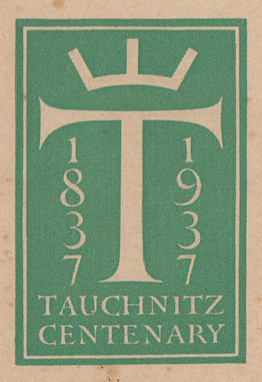 Some titles issued in 1937 include, on the jacket, a 1837/1937 Tauchnitz Centenary indicator. W. Townend’s Captain Heron is #5301 in the series and is dated November 1937. The full jacket, below, is otherwise similar to other jackets on paperbound Tauchnitz Editions issued from 1935-1938.
Some titles issued in 1937 include, on the jacket, a 1837/1937 Tauchnitz Centenary indicator. W. Townend’s Captain Heron is #5301 in the series and is dated November 1937. The full jacket, below, is otherwise similar to other jackets on paperbound Tauchnitz Editions issued from 1935-1938.
The card binding of Captain Heron:
While the interior of the book remains the same, the soft-bound Tauchnitz editions went through two design changes in the jackets near the end of the series. In 1938 (#5323) the jacket design below, with the white “T” in the black circle appears. Color coding of jackets and books remains the same as the earlier designs.
This copy of John Drinkwater’s novel Robinson of England was issued as #5345, in 1938. Yellow is for “Psychological novels, essays, etc.”
This copy of C.S. Forester’s Flying Colors, in its modest pink jacket and wrappers, is #5358 in the series, published in June 1939.
This copy of the Poems of Robert Browning was issued as #5368, in 1941, which was third from the last title issued in the series. Grey indicates “Plays, poetry and collected works.” The spine of the jacket has some peculiar damage where the series number and title were printed. A part of the title remains on the jacket, but a rectangular piece is missing as if a sticker was placed over the title, then removed, damaging the jacket paper.
The wraps in the final design for the softbound Tauchnitz Editions.


